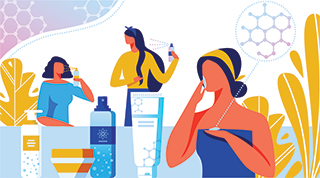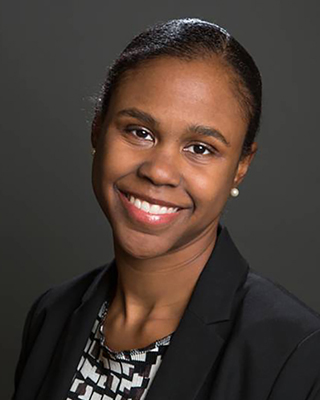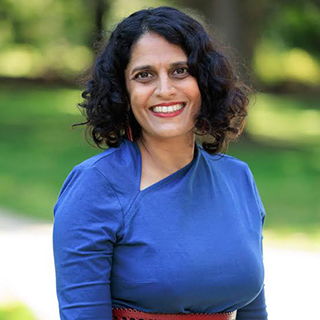May 12, 2023

Research suggests that social and structural factors — such as racism, classism, and sexism — shape beauty norms in ways that influence beauty product use, exposure to harmful chemicals, and health inequities. Researchers from two NIEHS-funded Environmental Health Sciences Core Centers (EHS Core Center) are working to increase awareness about the health inequities related to beauty product use and prevent harmful exposures to improve public health.
“We live in a society that has socially constructed norms, and this includes beauty norms,” said Tamarra James-Todd, Ph.D., of the Harvard University EHS Core Center. “While beauty may seem trivial and even superficial, studies have shown that beauty standards — whether it be lighter skin, straighter hair, being taller or thinner — matter with respect to power, including economic gain, and social acceptance.”
Chemical straighteners and skin lighteners, which are disproportionately used among people of color, can contain endocrine disrupting chemicals that mimic or interfere with hormones in the body. Research has linked exposure to endocrine disrupting chemicals in personal care products, like phthalates and parabens, to adverse health conditions such as menopausal symptoms, breast cancer, and poor birth outcomes.
Translating Information in a Creative Way

To raise awareness of how socially-driven pressures to use certain products contribute to harmful exposures and health disparities, James-Todd and her graduate students Lissah Johnson and Marissa Chan launched the Beauty + Justice podcast in November 2022.
“Translating scientific information into a clear and usable form is key,” said James-Todd. “We considered different media for distributing this information and the students in our lab thought that a podcast would be a good way to both translate the science ongoing in our lab, as well as highlight the incredible research being done by others in this area.”
The podcast series features conversations with environmental health and beauty justice experts — particularly women and people of color — ranging from public health and social scientists to medical doctors, toxicologists, community activists, and makeup artists. Episodes highlight strategies to help create a cleaner and more equitable future of beauty for all.
“Providing easily accessible information to policymakers and the public more broadly can help inform new policies to improve product safety and identify new opportunities for partnerships and collaborations to advance beauty justice,” said James-Todd.
Since its inception, the podcast has covered topics such as the role of research and advocacy to achieve beauty justice, alternative beauty products without harmful chemicals, and what clinicians can do to educate patients about ways to reduce exposures.
“One of my favorite episodes featured Dr. Tamara Gilks Borr who emphasized how beauty injustices result in a cost, not only financially, but also socially and physically,” Chan said.
The podcast has also highlighted the importance of community engagement in research. For example, in an April 2023 episode, Ami Zota, Sc.D., of the Columbia University EHS Core Center, discusses the value of partnerships with researchers and community members from a variety of backgrounds and fields to advance beauty justice.
The Power of Community Partnerships

“Early in my career, I noticed that even though many harmful personal care and beauty products are disproportionately used by women of color, most researchers were largely framing personal care product use as an individual choice,” said Zota.
In 2017, Zota co-developed the Environmental Injustice of Beauty framework, which helped launch and define the scholarly field of beauty justice. The framework calls attention to the social and economic drivers of beauty standards and its implications for product use, chemical exposures, and health across the life course.
As part of the Columbia EHS Core Center, Zota works closely with WE ACT for Environmental Justice, a community-based organization in New York City. Through this partnership, the collaborators hope to reduce health risks from exposure to chemicals in beauty products among Black, Latinx, and Asian individuals.
A recent study by the team suggests that racialized beauty norms motivate some women of color to use chemical hair straighteners and skin lighteners. The researchers surveyed 297 women and femme-identifying individuals in New York City and found that 57% of non-Hispanic Blacks and 48% of Hispanic Blacks reported ever using chemical hair straighteners. They also observed that 57% of non-Hispanic Asians reported using skin lightening products. Respondents’ reasons for using these products included beliefs that straight hair or lighter skin make women look more beautiful, wealthier, and more professional.
“This study shed light on how beauty norms shaped by historical and present-day racism and sexism are harming the health and well-being of women of color,” Zota said. “Our findings underscore why we need programs and policies that counteract colorism and natural hair discrimination.”
Building on findings from this and other studies, Zota and team will continue to work within community-based research collaboratives in New York City and Los Angeles to reduce the health risks of chemicals in personal care products.


